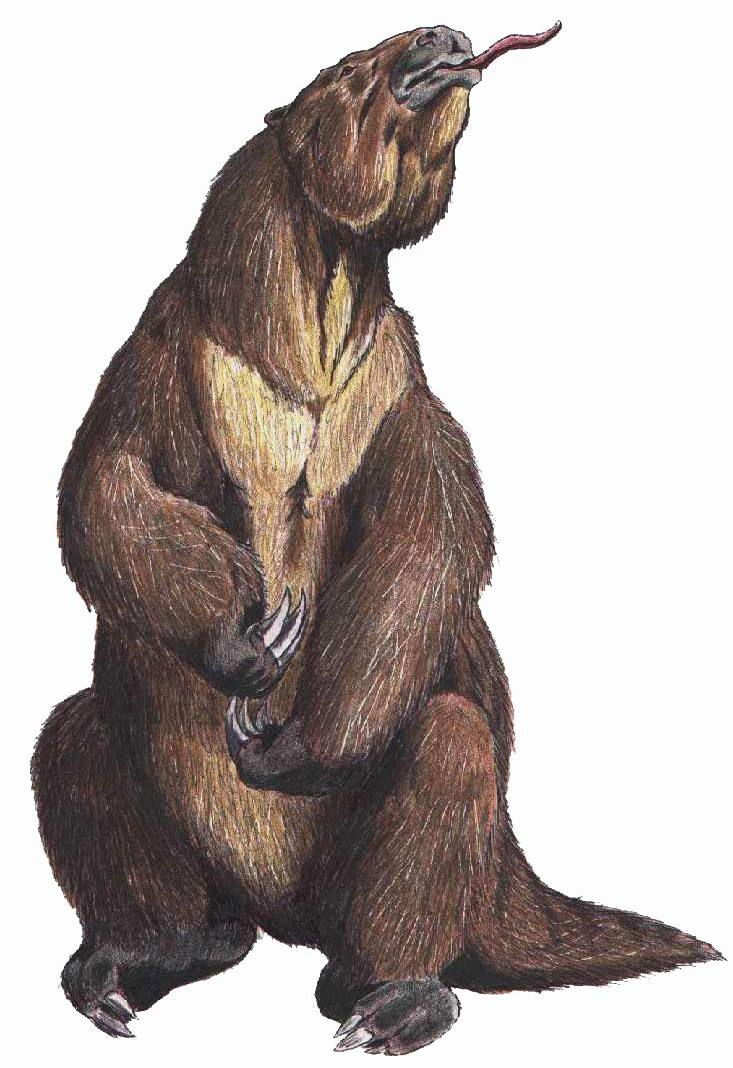In a well-deserved world-wide wave of publicity, the existence of a new hominid species was announced recently. Fossil hominins were first recognized in the Dinaledi Chamber in the Rising Star Cave system in October 2013. Now, some two years later, and after exhaustive analysis of more than 1,500 bone fragments, the team decided to go public with this first milestone: the identification of a new human ancestor.
A selection of these bones have been scanned and uploaded to the internet. They also wrote up their findings and published them in an open-access source, eLife, rather than more established channels such as Nature or Science. (A brief side note: as can be seen in this video, one of the thirty specialists involved in the initial evaluation of these remains was Viktor Deak, who was part of the Houston Museum of Natural Science’s team putting together the Lucy’s Legacy exhibit as well as the section on human evolution in the museum’s Morian Hall of Paleontology.)
While social media are currently lit up with all kinds of references to this new species, it might be interesting to address this fundamental question: how does one define a new
hominid species? In other words: “Why is naledi called naledi?“
A starting point in this process is to identify a type specimen. Such a specimen is described in great detail, listing the similarities to and differences from closely related species. There is no central authority that decides on the validity of a species. Rather, this depends on the acceptance of such a designation within the scientific world. New discoveries and more information have given impetus to revisit previous species designations and change them.
As a result, “[i]f two type specimens are later determined to belong to the same species, then the first one named takes priority. For example, when it was decided that the 2nd known australopithecine fossil, assigned to Plesianthropus transvaalensis, actually belonged to the same species as the first that name became invalid and all Plesianthropus fossils were reassigned to Australopithecus africanus.

Skull fragments from the holotype specimen show Homo naledi had a brain about the size of an orange.
If it is decided that the fossils previously assigned to a species actually belong to two different species, then the type specimen and any other specimens belonging to the same species as it keep the old name. The other fossils will take the name of whichever specimen among them is first used as a type specimen for a new species definition. An example is Homo habilis (type specimen OH 7); the species Homo rudolfensis, with type specimen ER 1470, consists of fossils formerly assigned to habilis.”
This new species belongs to the genus Homo. Traditionally, one is a member of that genus if the following criteria are met (Since these are set by human researchers, they are subject to periodic re-evaluation):
- Brain size: at least 600 cubic cm.
- Possession of language
- Opposable thumbs and precision grip
- Ability to manufacture (stone) tools
We all belong to the genus Homo, species sapiens and subspecies sapiens. We are “Humans, wise, wise” or “very smart humans.” (Since we are the humans investigating ourselves and our ancestors, it should not come as a surprise that we have kept the most honorific label for ourselves.)
If we translate Homo naledi into plain English, we can start with naledi. The species was named Homo naledi; ‘naledi’ means ‘star’ in Sotho (also called Sesotho), one of the languages spoken in South Africa.
According to the research team, the definition of the new species was not “based on a single jaw or skull because the entire body of material has informed our understanding of its biology.”
Interestingly, Homo naledi’s brain size is in the 400 to 600 cubic cm range, yet they are considered to be members of the genus Homo. Here is why: “The shared derived features that connect H. naledi with other members of Homo occupy most regions of the H. naledi skeleton and represent distinct functional systems, including locomotion, manipulation, and mastication.”
Fossil Dating
One aspect currently left unanswered is when Homo naledi lived; the scientists offer what-if scenarios for dates ranging between one and two million years ago, some even more recent. These are just that: scenarios. They do not provide a date, as none exists at this point.
That brings up the question: how does one date a fossil? Knowing when a human ancestor lived helps us understand the affiliations of different species and who might have evolved from whom. Scientists have access to a wide array of dating techniques.
Radiometric Dating
Several techniques measure the amount of radioactive decay of chemical elements. Known as radiometric dating techniques, these include potassium-argon dating, argon-argon dating, carbon-14 (or radiocarbon), and uranium series. This radioactive decay occurs in a consistent manner over long periods of time. A benchmark concept in using this approach is that of a “half life,” defined as “the time it takes for one-half of the atoms of a radioactive material to disintegrate.” Early hominid sites in Eastern Africa have stratigraphic affiliations with volcanic layers. These layers can be dated with the radiometric dating techniques just described. As we will see below, the situation in Southern Africa is different.
Measuring Stored Electrons
Thermoluminescence, optically stimulated luminescence and electron spin resonance measure the amount of electrons that get absorbed and trapped inside a rock or tooth over time. The application of these techniques to date fossils highlights how the study of human origins truly is a multi-disciplinary effort.
Thermoluminescence “(or TL) is a geochronometric technique used for sediment. The technique has an age range of 1,000 to 500,000 years. The technique is used on sediment grains with defects and impurities, which function as natural radiation dosimeters when buried. Part of the radioactive decay from K, U, Th, and Rb in the soil, as well as contributions from cosmic rays, are trapped over time in sediments. The longer the burial, the more absorbed dose is stored in sediment; the dose is proportional to a glow curve of light obtained in response when the sample is heated or exposed to light from LEDs. Greater light doses indicate an older age.”
Luminescence dating is “a form of geochronology that measures the energy of photons being released. In natural settings, ionizing radiation (U, Th, Rb, & K) is absorbed and stored by sediments in the crystal lattice. This stored radiation dose can be evicted with stimulation and released as luminescence. The calculated age is the time since the last exposure to sunlight or intense heat.”
Finally, “electron spin resonance (ESR) measures the number of trapped electrons accumulated, since the time of burial, in the flaws of dental enamel’s crystalline structure. At sites containing human and animal teeth, ESR can be used to determine how long the teeth have been in the ground, but finding teeth at an archaeological site is unusual, so this dating method is not as common as thermoluminescence or radiocarbon dating.”
Another dating technique altogether is paleomagnetism. It compares the direction of the magnetic particles in layers of sediment to the known worldwide shifts in Earth’s magnetic field, which have well-established dates using other dating methods.
Sites in Southern Africa cannot be dated with techniques outlined earlier. A lot of the fossil remains are found in a stone matrix, rather than on the surface. These fossils can be dated using biochronology. Most often – though not always – hominid remains are found in stratigraphic association with animal bones. Quite often, these animal remains belong to animal species that roamed elsewhere in Africa, where absolute dates are available. In this way, sites that do not have radioactive or other materials for dating can still be given a reliable age estimate.
Finally, one can estimate the time that elapsed since two species separated from a common ancestor. This is based on the concept of a molecular clock. This method compares the amount of genetic difference between living organisms and computes an age based on well-tested rates of genetic mutation over time. Since genetic material (like DNA) decays rapidly, the molecular clock method cannot date very old fossils. The most ancient DNA that has been retrieved thus far dates back to 300,000 to 400,000 years ago.
There is no doubt that more information will be forthcoming from the Rising Star Cave system in South Africa. Over the last two years, the researchers have literally scratched the surface of what is in the cave. As mentioned earlier, the genus Homo is defined by a number of features. One of these used to be that we buried our dead. This appeared to have happened in this case as well. Once the remains are dated, we will know if this fundamentally human trait extended further back in time than we ever imagined. Or not.











